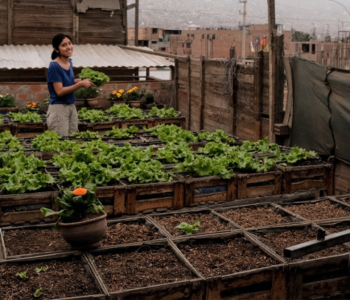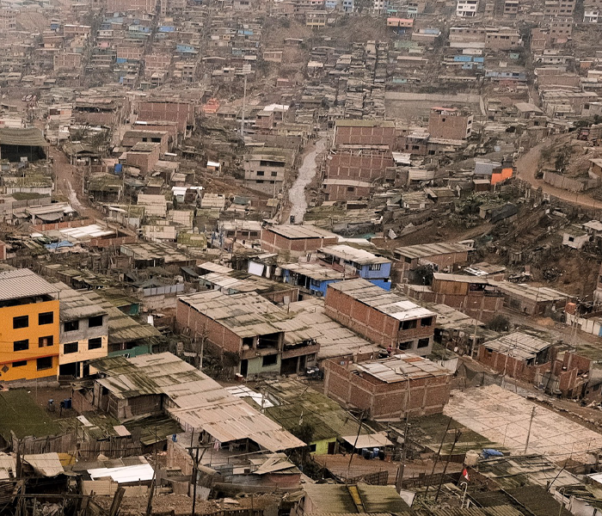
Urbanization and agriculture evolved together, but as cities grew, so did the distance between urban populations and the farms they depend on, increasing the risk of food insecurity and the cost and carbon footprint of every calorie. At the same time, nutritious food is a luxury for many urbanites, and the COVID pandemic, conflicts and other crises have made matters worse.
Such dilemmas will likely intensify as urbanization advances, as two thirds of the global population are expected be urban by 2050, creating both challenges and opportunities. Governments and civil society are trying to grapple with the challenges, and the CGIAR Research Initiative on Resilient Cities aims to inform, foster, and draw lessons from such efforts in six cities in Africa, Asia and Latin America.
One of those cities is Lima, Peru, a country where seven CGIAR Research Initiatives will be implemented over the next three years. A sprawling metropolis in the coastal desert between the foothills of the Andes and the Pacific Ocean, Lima is home to almost 11 million people, and at least eight million of them cope with food insecurity. It was once a vast agricultural oasis crisscrossed by canals that delivered water from several rivers, but about 75 percent of that farmland has been developed and millions of Lima’s residents live in hillside or desert settlements, many of which lack running water.
“Lima has become a very challenging city. Nevertheless, it has institutions and people dedicated to solutions. We have problems, but we also have opportunities thanks to the institutions and organizations working for positive change,” said Willy Pradel, an economist with the International Potato Center (CIP) and focal point of the Resilient Cities Initiative in Peru.
Pradel explained that CIP is partnering with government programs, international and non-governmental organizations (NGOs), universities and businesses to provide research support for the development of innovations. The objectives include revitalizing urban and peri-urban agriculture, improving access to affordable healthy food in poor neighborhoods, mitigating risks to human and environmental health, fostering sustainability, and catalyzing inclusive economic opportunities.
Pradel noted that Lima is already a leader in areas such as organic farmers’ markets, held in many parts of the city, and the municipality’s involvement in international agreements to make cities more sustainable. One example of that leadership is Lima’s Food System Council, CONSIAL, which includes representatives of municipal and central governments, local and international organizations and universities in efforts to address urban issues, and has been active in the Initiative.
“Our goal is to improve access to food, to ensure food security and nutrition. One way we’ve done this is through decrees to support markets and urban and peri-urban agriculture,” explained Katya Bullón, a member of CONSIAL’s Technical Secretariat. “There is a lot of synergy between CONSIAL and the Resilient Cities Initiative,” she added.

Another Initiative partner is Lima 2035, an organization created by a diverse group of professionals, including CIP scientists, to make Lima a greener, more resilient and inclusive city.
Yet another key partner is the National Agrarian University’s business incubator, Incubagraria, which has supported the development of more than 50 enterprises, 85 percent of which are led by women and all of which have demonstrated positive environmental impacts.
“Innovations have always happened in cities, and there is a lot of hope and activity in Lima, and in other cities, to demonstrate how research and science can support innovation,” observed CIP scientist Simon Heck, global leader of the Resilient Cities Initiative. “Urbanization needs to become a tool to achieve sustainable food systems,” he said.
Hugo Campos, CIP Deputy Director General for Research and Development, noted that Resilient Cities will contribute to one of CIP’s main goals, which is to improve quality of life.
“For the millions of people in Lima who live below the poverty line and spend a large part of their income on food, better access to affordable nutritious food can improve their quality of life,” Campos said. “While improving the quality of life of people in Lima, we also want to generate lessons that can be applied in other cities and benefit their populations” he added.
